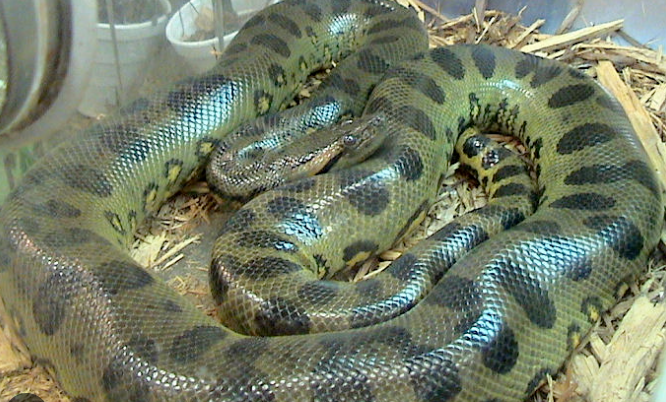Two New Species of ‘Green Anacondas’
Recent genomic analysis by an international team of scientists has revealed that the iconic green anacondas inhabiting swampy Amazonian landscapes, considered the world’s heaviest snakes, are actually two different species with distinct genetic lineages contrary to traditional zoological classification.
About the Discovery
The findings published in February 2024 journal ‘Science Advances’ highlight that the northern and southern Amazonian anaconda populations separated evolutionarily at some point, developing sufficient reproductive barriers warranting updated taxonomic categorization into two species going forward.
Tracing Genetic Variations
Anaconda tissue samples collected extensively across the Amazon basin subjected to mitochondrial DNA sequencing displayed noticeable genetic divergences between northern and southern sub-populations, sufficient for speciation split due to years of isolation.
Implications of Updated Taxonomy
Formally recognizing two separate biological species holds significance for advancing conservation efforts as policy interventions can now target ecologies of each more sharply instead of clubbing both earlier. Their vulnerability assessments would also differ now accordingly.
The Elusive Giants of Amazon
Inhabiting swamps and slow-moving water bodies of the Amazon rainforests, the green anaconda can grow up to 5.5 m, weighing a staggering 227 kg or more.
The green anaconda (Eunectes murinus), also known as the giant anaconda, emerald anaconda, common water boa, or southern green anaconda is a boa species found in South America and the Caribbean Island of Trinidad.
It is the largest, heaviest and the second longest (after the reticulated python) snake in the world. It is a non-venomous constrictor, like all boas.
Special Features
The colour pattern consists of an olive-green background overlaid with black blotches along the length of the body. The head is narrow compared to the body, seen with orange-yellow striping on either side.
As Anacondas are nocturnal and aquatic, they float underwater and are known to swim quickly.
The gestation period of the species is usually six to seven months. When no males are available, facultative parthenogenesis is possible, which is a mode of asexual reproduction.
Threats Confronting Anacondas
From poaching for skin and meat to wetland habitat loss and pet trade capturing younglings, multiple threats compound their survival challenges as apex non-venomous predators.
In 2021, green anacondas were added to Florida’s list of prohibited nonnative species. As of August 2023, eleven green anacondas have been verifiably observed in the wild in Florida.
Category: Environment Current Affairs








